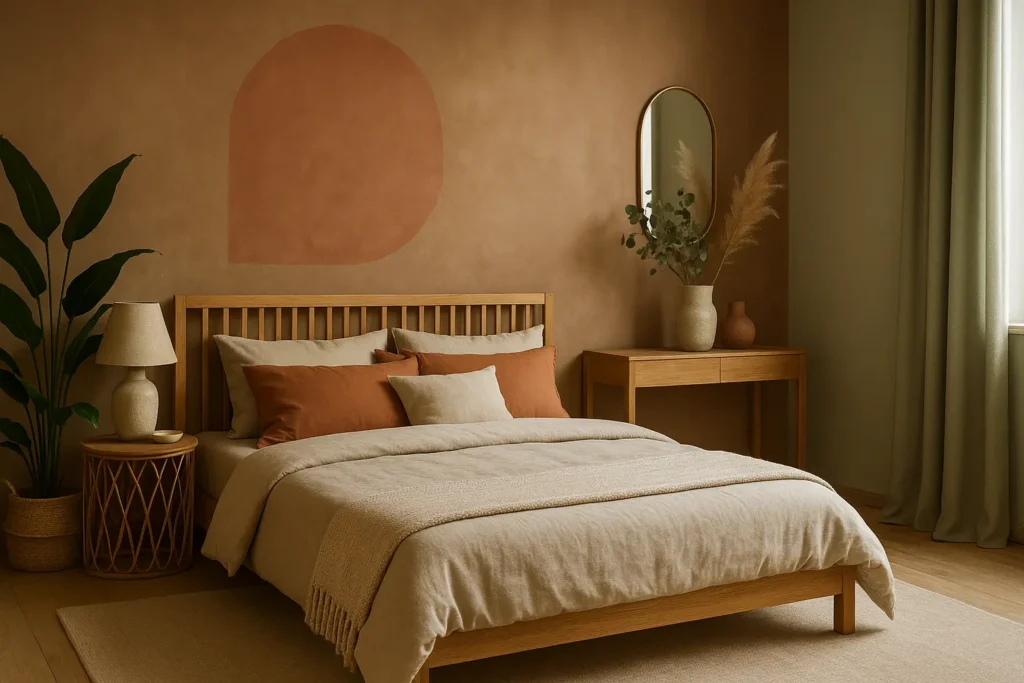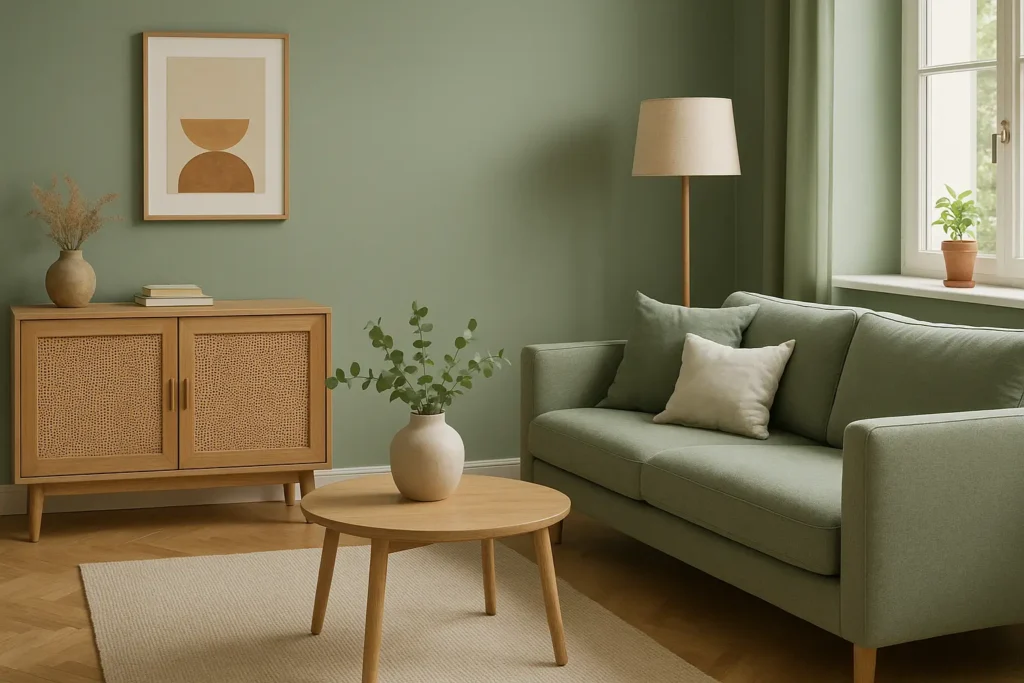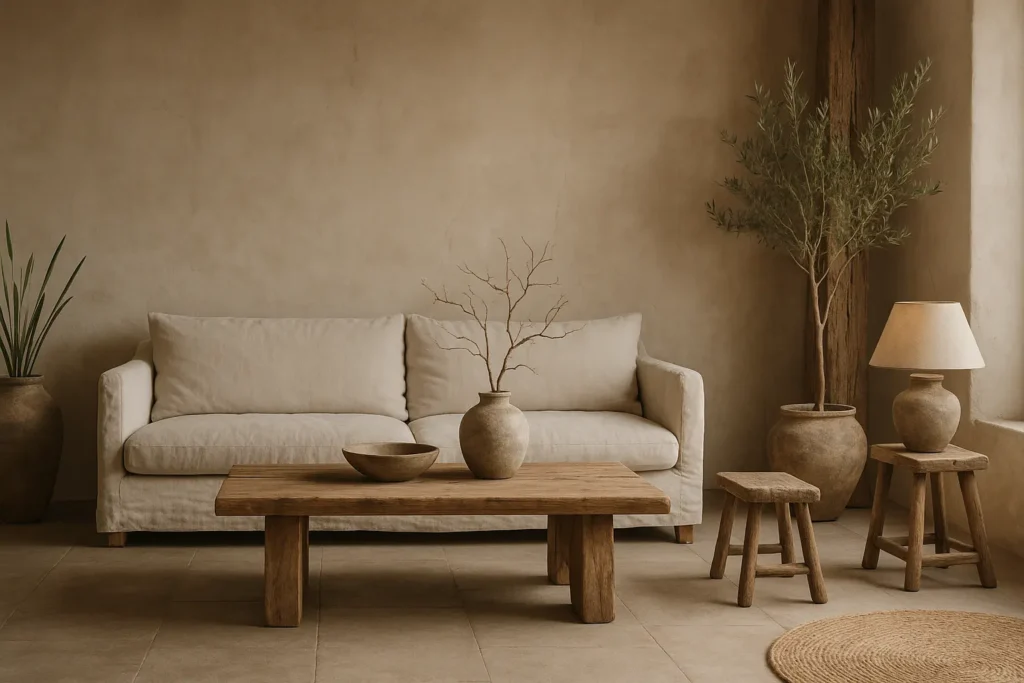Of course, at La Maison Coloniale, we always feel a particular fascination when we come across a colonial style house, whether it is French, British or American in style. Each colonial-style house seems to tell stories of distant adventures. The colonial style house draws its roots from the era of European expansion of the 18th and 19th centuries, creating a unique fusion of classical elegance and exotic touches. What particularly touches us in these colonial style houses, it is their ability to cross the ages without ever losing their splendor. Let's take a look at the architectural characteristics of these houses, the materials they are made of and the characteristic furniture that make up all the charm of this style of house.
Our article in brief:
There colonial style house combines historical architectural heritage and timeless aesthetics adaptable to contemporary interiors.
- Characteristics of a colonial style house: spacious verandas, elegant columns and generously overhanging roofs that intelligently adapt to the different climates.
- Noble materials : dark woods (mahogany, teak), natural fibers and precious metals creating a warm atmosphere.
- Colonial Style House Color Palette : dominant neutral and earthy tones, punctuated with green, blue or brick red accents.
- Iconic furniture : sturdy pieces made of solid wood such as the four-poster bed, complemented by accessories evoking travel.
In this article
Architectural characteristics of colonial-style houses
When we talk about thearchitecture of a colonial house, certain distinctive elements immediately come to mind. This majestic architecture conveys a certain opulence while intelligently adapting to the varied climates of the different colonized regions.
Emblematic exterior elements of a colonial-style house
THE spacious verandas and verandas are arguably the most recognizable element of the colonial style. These semi-outdoor spaces provide an additional living space where one can enjoy fresh air while remaining sheltered. Often adorned with imposing columns reminiscent of the wabi-sabi aesthetic With their elegant simplicity, they create a harmonious transition between interior and exterior.
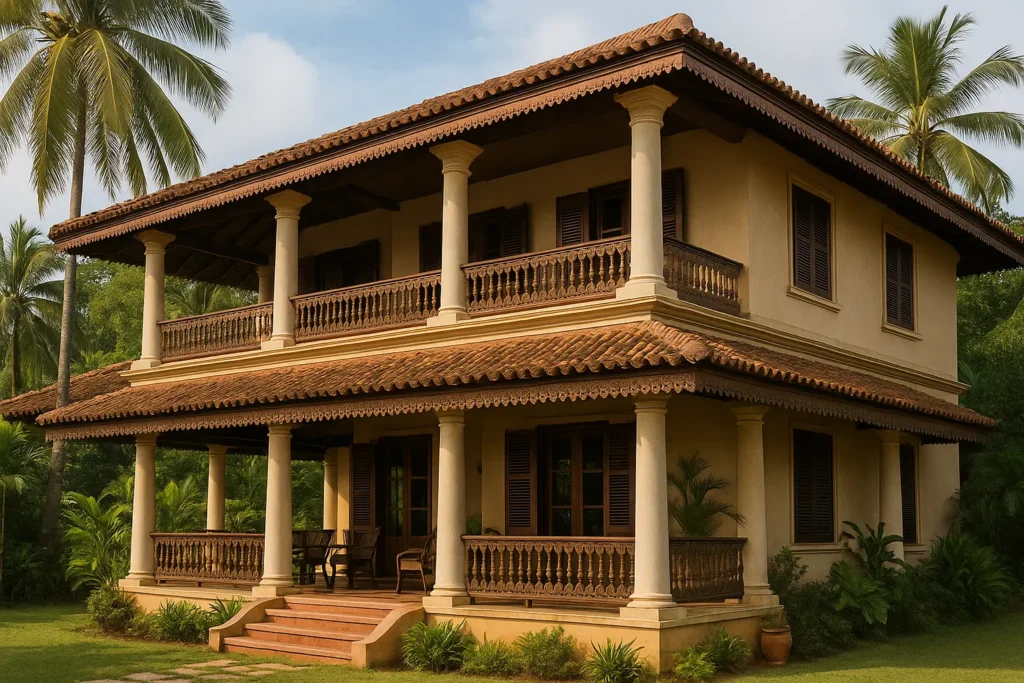
The generously overhanging roofs aren't just decorative—they protect the facades from the intense sun and tropical rain. These overhangs, often embellished with wooden valances and friezes, add a distinctive touch to the house's silhouette. Solid wood joinery and Indian teak shutters allow for natural temperature regulation, demonstrating an ingenious adaptation to the climate.
Regional adaptations of the colonial-style house
Colonial architecture took different forms depending on the territory. In Louisiana and the southern United States, plantation houses display light wood facades, open patios and huge terraces.Oak Alley Plantation, with its avenue of century-old oaks, perfectly illustrates this southern style influenced by French and Spanish traditions.
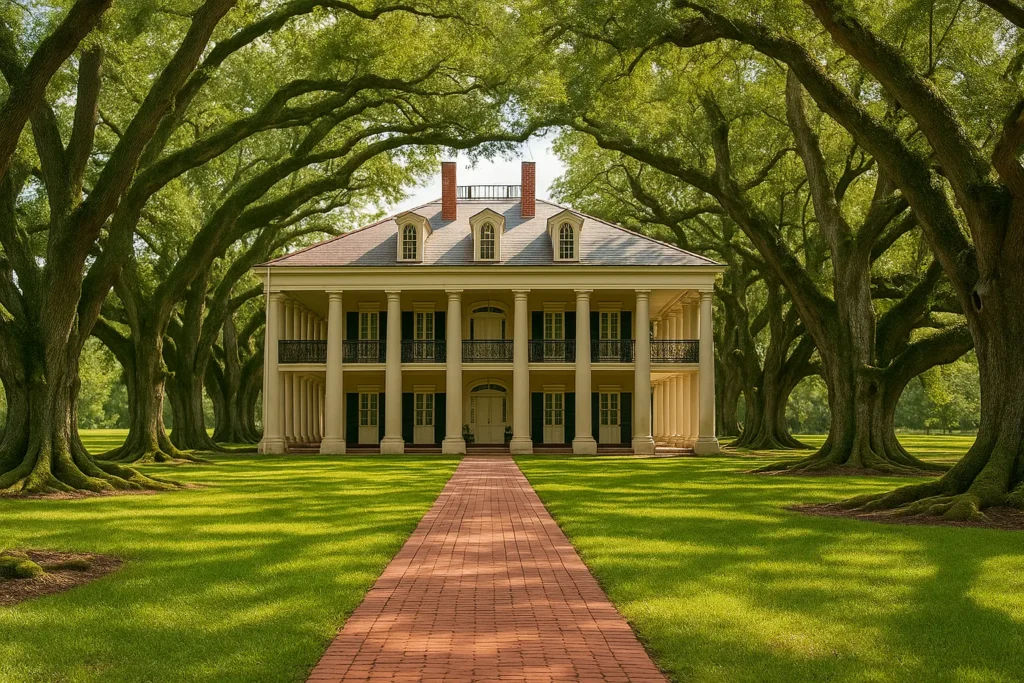
In North America, architecture became more massive, drawing more inspiration from European homes. Stone often replaced wood, creating more robust structures suited to harsh winters. These differences demonstrate the Colonial style's extraordinary adaptability to climatic constraints and available local resources.
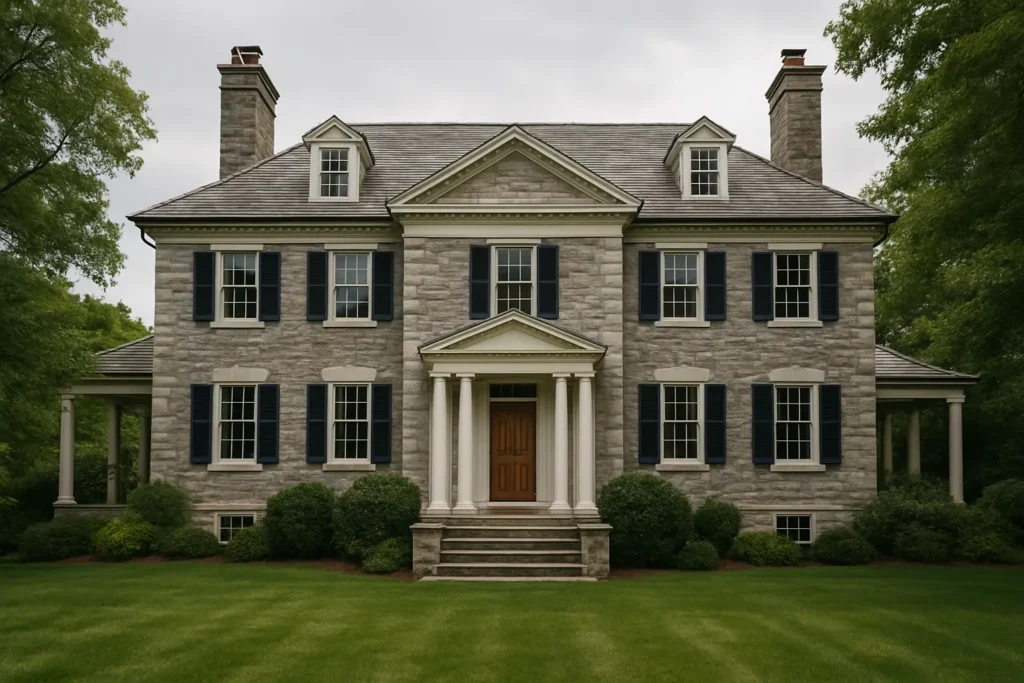
French Colonial Style House Architecture in Detail
There French colonial style house stands out for its discreet refinement and sense of harmony. These residences were mostly built in the former colonies of Africa, Indochina or the Antilles. There are hipped roofs, of large covered galleries supported by soberly sculpted columns, and shuttered windows which promote natural ventilation.
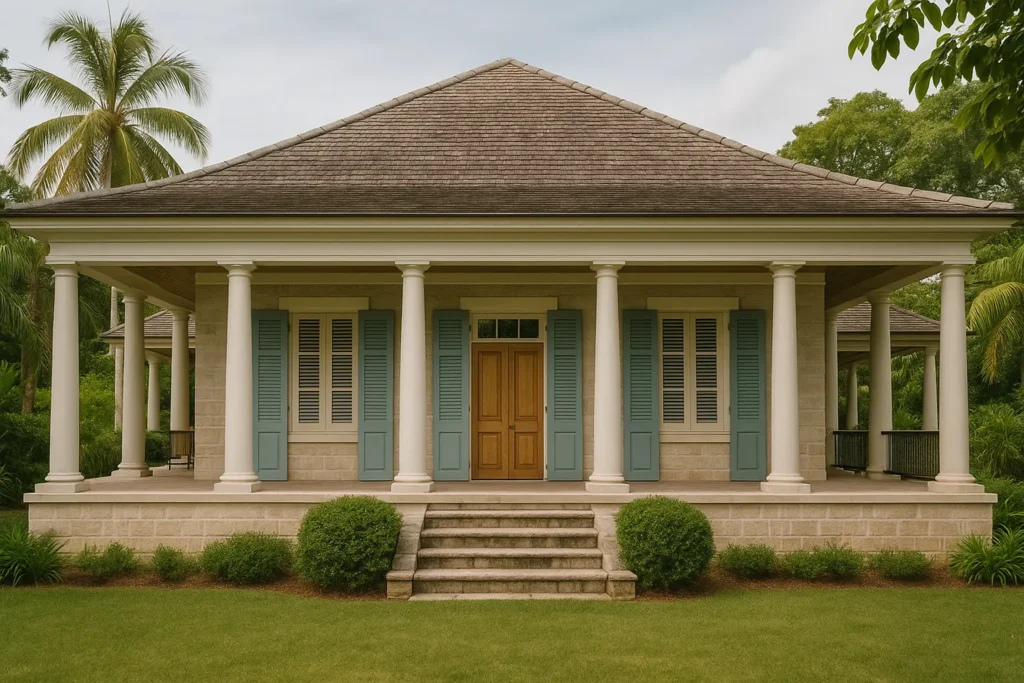
The elegance of a French colonial style house comes from balanced proportions, noble materials like wood, stone or brick, and a neutral palette enhanced by a few pastel touches. It's a style that exudes timeless grace.
American Colonial Style House Architecture
Rooted in the founding history of the United States, the American colonial style house evokes a majestic sobriety inherited from European settlers. Depending on the region, the houses vary: in the North, the buildings are massive and stone, with central chimneys And symmetrical facades, perfect for facing harsh winters; in the South, like in Louisiana, we find plantation houses in light wood, equipped with imposing terraces, neoclassical colonnades And dark shutters.
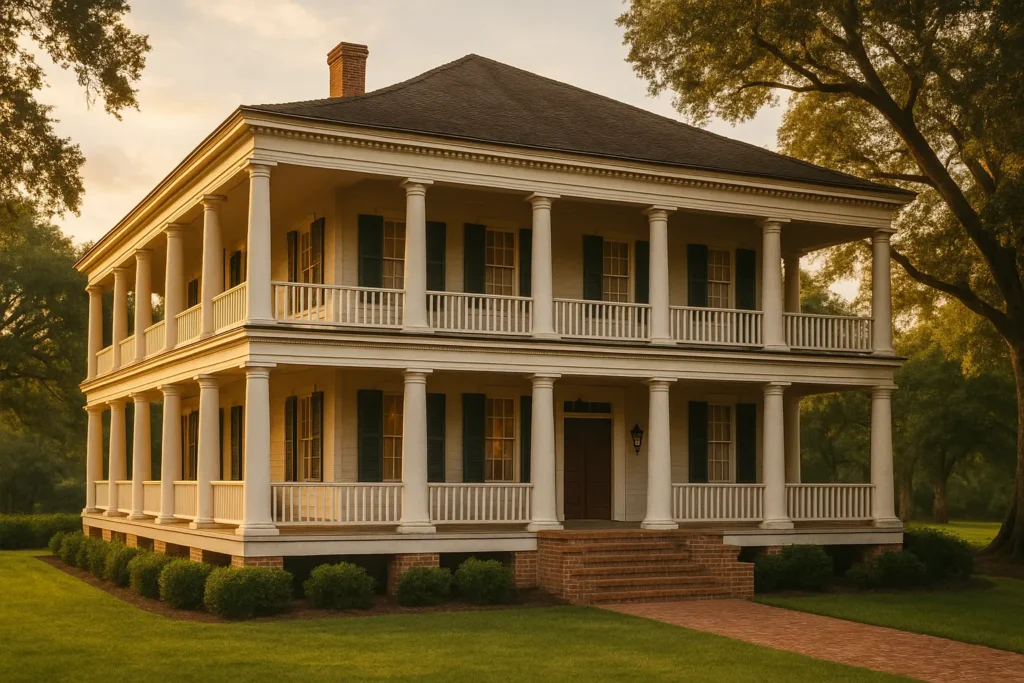
The charm of a American colonial style house operates through the nobility of the materials, the rigorous alignment and this almost cinematic atmosphere which crosses the eras.
English Colonial Style House Architecture
Simple, functional and full of character, the English colonial style house was born from a pragmatic art of living adapted to the tropical climates of India, East Africa or the Caribbean. These homes favor natural ventilation, with large windows, of the high ceilings and shaded verandas. The structures are often made of brick or stone, covered with tiled or corrugated iron roofs, with ceiling fans and decorative valances.
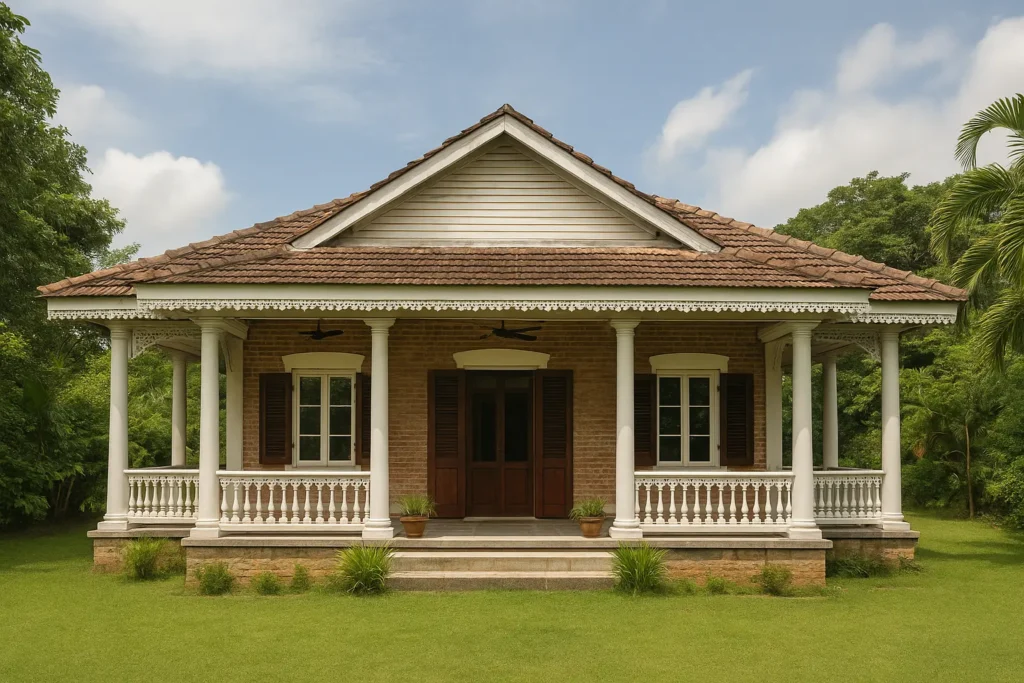
There English colonial style house combines Victorian tradition and colonial adaptation, creating houses that are as elegant as they are functional, where time seems to stand still.
Caribbean colonial style house architecture
There Caribbean colonial style house is an ode to light, freshness and conviviality. Inspired by the French model but tinged with Creole influences, it favors open spaces : large verandas, continuous galleries, openwork shutters, And swing doors facilitating air circulation.
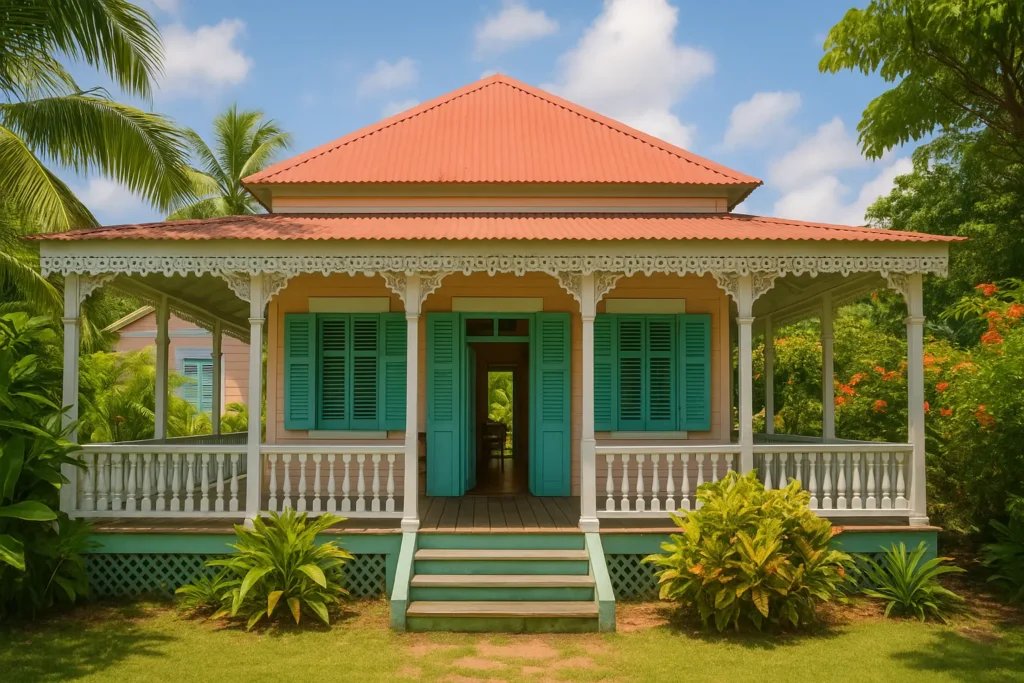
There Caribbean colonial style house is often in painted wood, with pastel shades, delicately cut friezes under the roofs, and lush gardens within easy reach. Here, everything invites relaxation and sharing, in a colorful and joyful aesthetic, deeply rooted in Caribbean culture.
Spanish Colonial Style House Architecture
Finally, the Spanish colonial style house shines with its character Mediterranean and warm. Very present in Latin America, it is recognized by its white facades, his rounded arches, his interior patios and his red tiles. The materials used (stone, adobe, carved wood) create a striking contrast with the play of light and shadow.
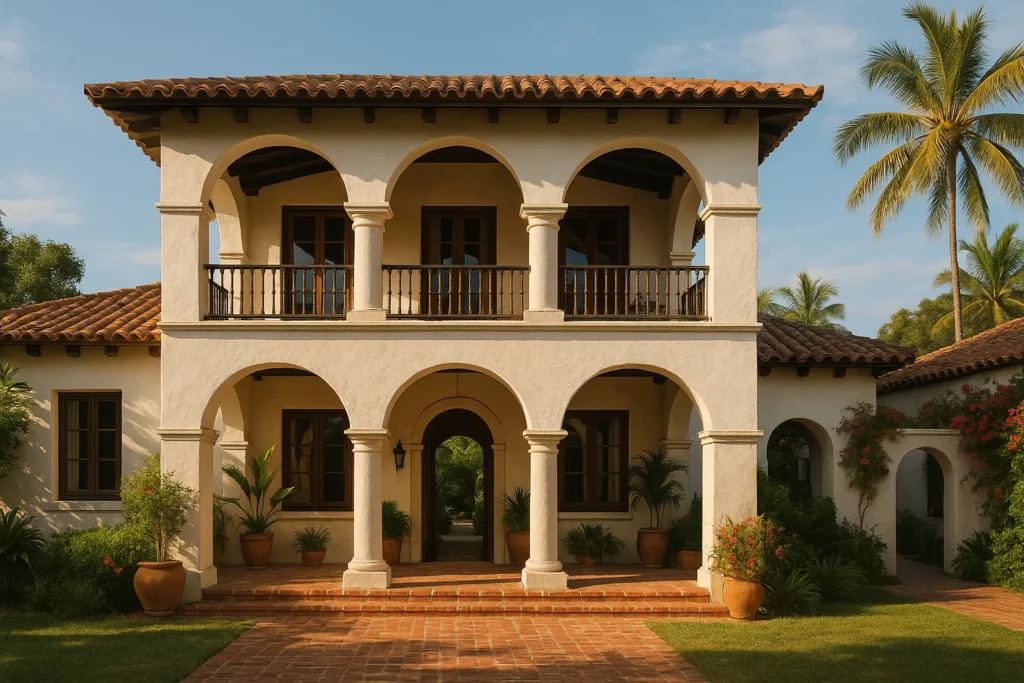
The interiors of a Spanish colonial style house are fresh, decorated with handmade ceramics, of wrought iron and of textiles with traditional patternsThis style, both rustic and noble, tells a story of cultural mixing between Europe and the Americas, in a vibrant and sunny atmosphere.
Materials and color palette for an authentic colonial-style home
The beauty of a colonial style interior relies heavily on the use of noble materials and a color palette inspired by nature. These fundamental elements create the warm and elegant atmosphere characteristic of this style.
Wood species and natural materials
Wood is the soul of the decoration of an authentic colonial houseDark woods like mahogany, teak, and acacia dominate, bringing warmth and character to spaces. Here are the essential materials for a successful colonial interior:
- Solid woods with deep tones for floors, moldings and furniture
- Natural fibers such as rattan, wicker and bamboo for seating and small furniture
- Natural fabrics: linen, silk, cotton and leather for textiles and coverings
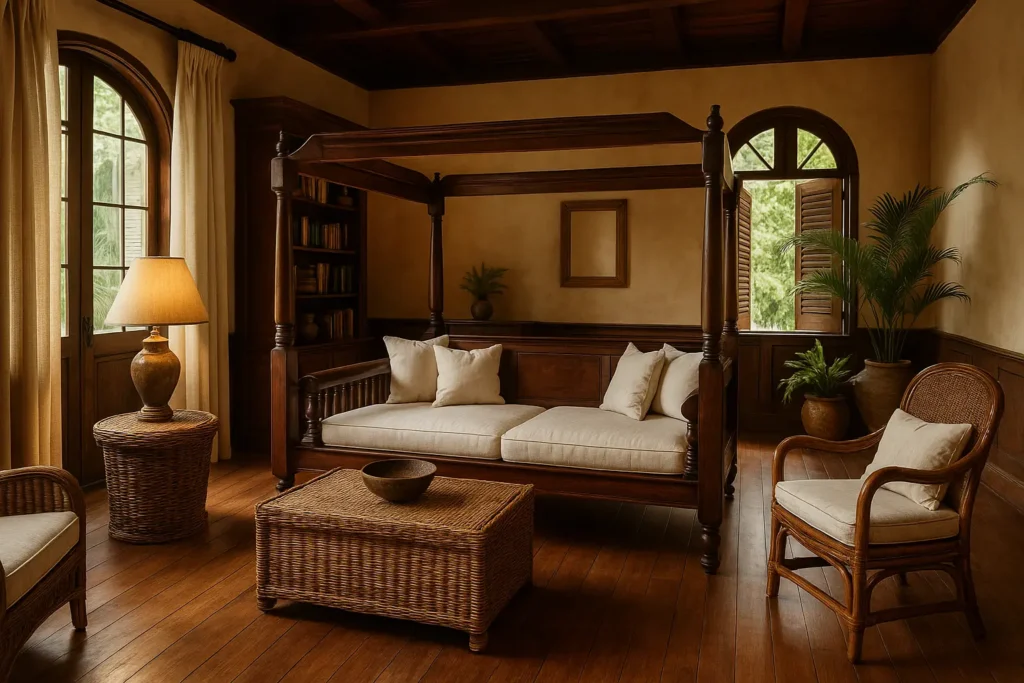
These raw materials blend perfectly with metallic details in bronze or brass, which punctuate the space with precious touches without ostentation. For the floors, nothing replaces the nobility of a dark wood parquet floor, which serves as a showcase for furniture and accessories.
Colonial Style House Color Palette
There color palette of a colonial style house draws direct inspiration from the surrounding nature. Neutral and earthy tones predominate, creating a soothing ambiance punctuated by more vibrant accents:
| Basic colors | Accents | Application |
|---|---|---|
| Beige, ivory, sand | Sage green, olive | Walls, large surfaces |
| Ocher, terracotta, brown | Indigo blue, duck | Textiles, accessories |
| Taupe gray, ecru | Brick red, burgundy | Decorative accents |
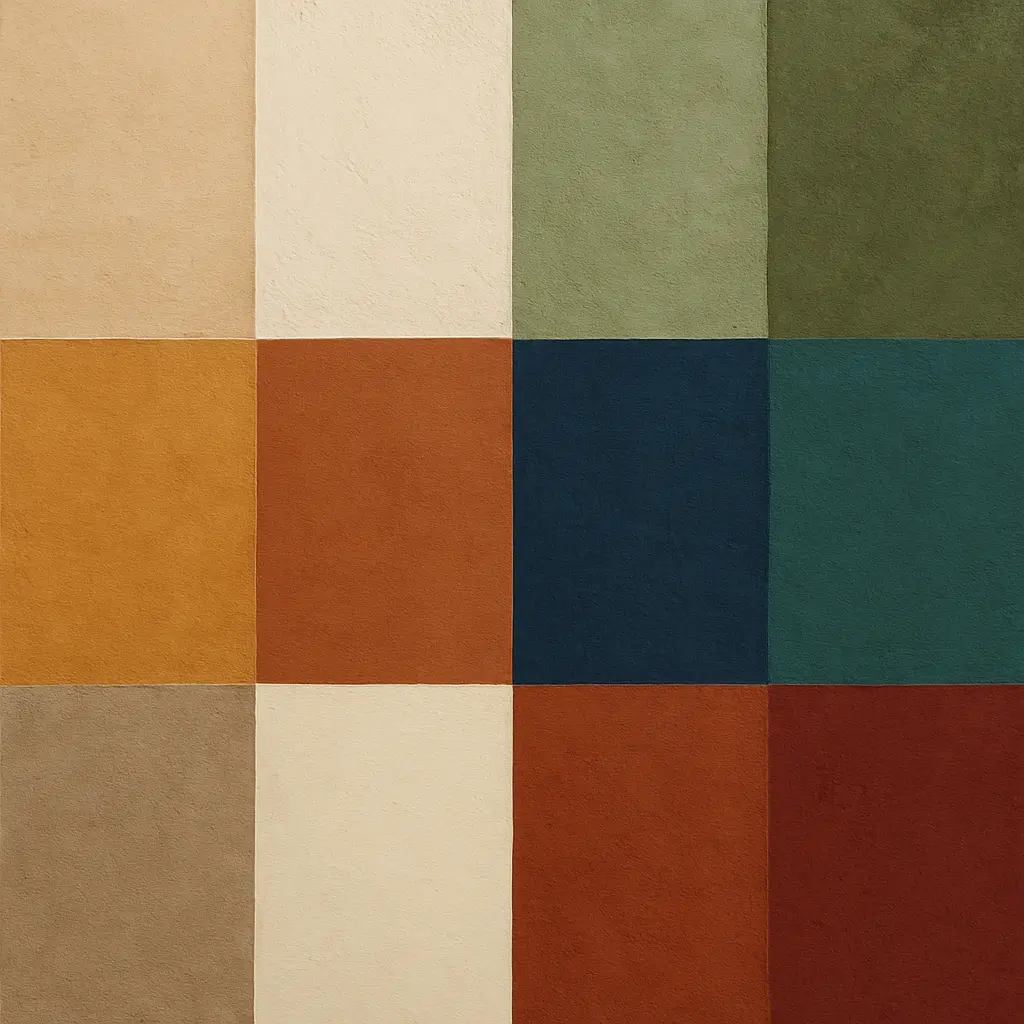
These trendy colors for 2025 blend naturally with dark woods and can be enhanced by subtle patterns evoking tropical flora or African ornamentation on textiles and wallpapers.
Furniture and decorative elements of the house in colonial style
THE furniture of a colonial house stands out thanks to its sobriety, robustness and timeless elegance. Each piece tells a story and evokes a journey, creating an interior that is both refined and imbued with exoticism.
Key pieces of colonial furniture
In a colonial living room, centerpieces typically include imposing dark wood display cabinets and bookcases, perfect for displaying porcelain and souvenirs brought back from faraway lands. Clean-lined sideboards provide storage and display space for a few carefully chosen objects.
For the bedroom, nothing equals the presence of a solid wood four-poster bed Dressed in linen or cotton curtains, this iconic piece becomes the focal point of the room, complemented by bedside tables and chests of drawers with simple yet elegant lines. In workspaces, a rustic desk paired with a leather chair creates a space conducive to mental escape.
Terraces and verandas are adorned with rattan, bamboo, or wicker furniture, creating a natural transition between indoors and outdoors. These durable materials bring lightness and freshness to semi-outdoor spaces.
Accessories and decorative objects from this house open to the world
The soul of a colonial-style house lies in its accessories that evoke travel and adventure. Here are some must-have decorative elements:
- Objects evoking exploration: old trunks, framed maritime charts, vintage globes
- Natural elements: exotic plants such as monsteras, Chinese palms or birds of paradise
- Handcrafted pieces: tribal masks, paper fans, delicately crafted screens
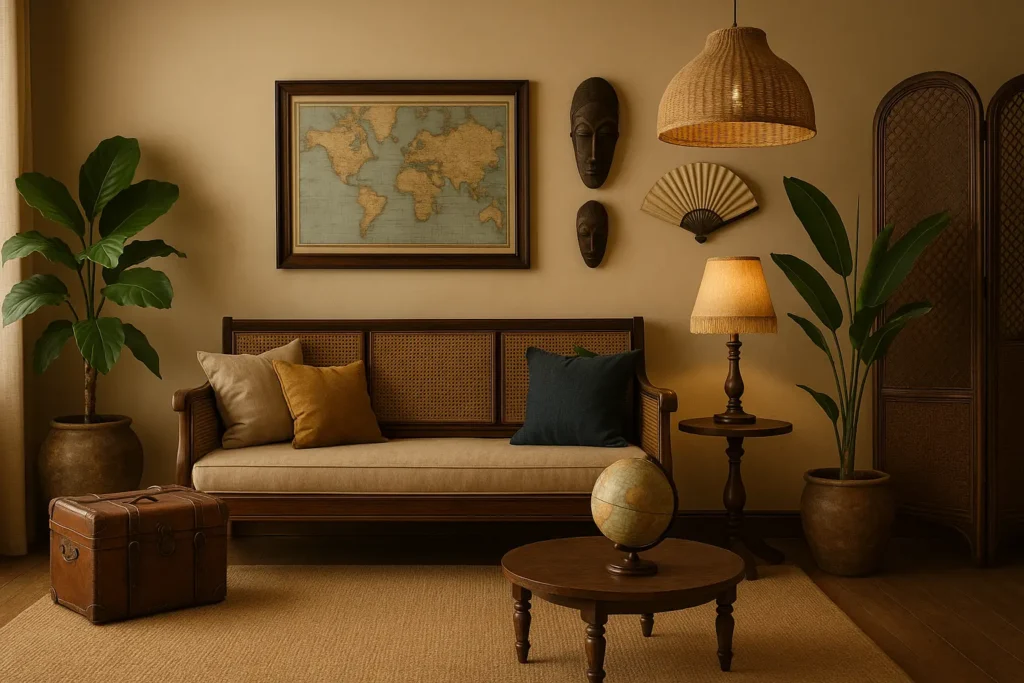
THE natural fiber rugs Fabrics like sisal or jute visually anchor spaces while providing warmth and comfort. Lighting also plays a crucial role: table lamps with fringed shades, rattan pendant lights, or wood and brass ceiling fans contribute to the distinctive ambiance.
Build a modern and ecological colonial style house
Today, it is entirely possible to reconcile the timeless charm of colonial architectural style with contemporary requirements in terms of energy performance and respect for the environment.
Insulation solutions and sustainable materials
A modern colonial style house can incorporate high-performance insulation solutions while preserving its characteristic aesthetic. The thick walls, typical of this style, can accommodate reinforced insulation made from natural materials such as wood fiber or cellulose wadding.
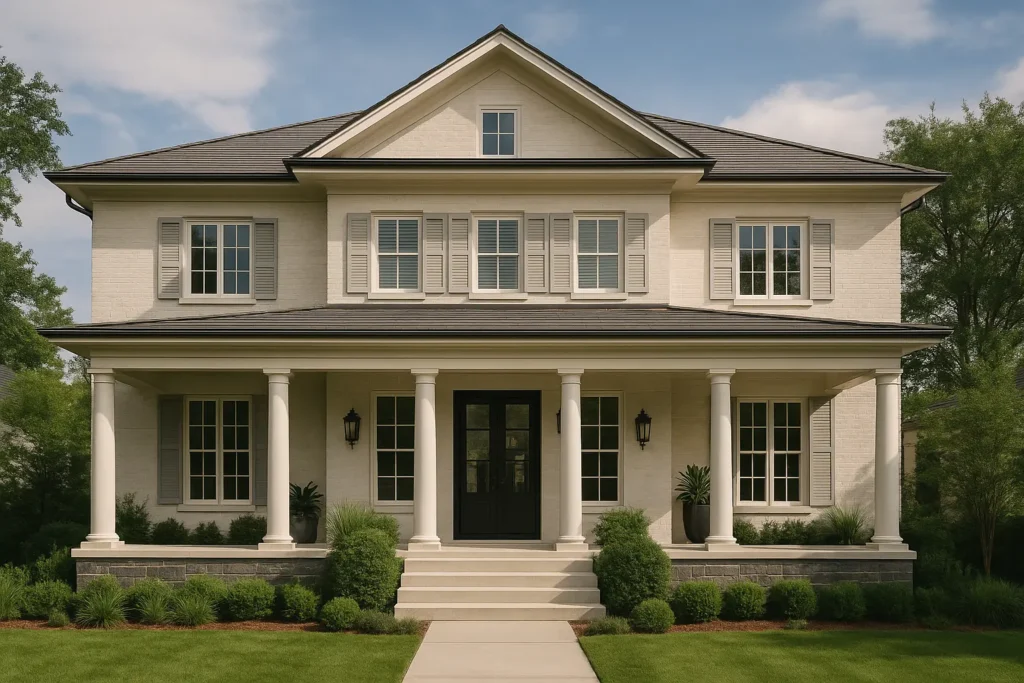
For joinery, wood remains the preferred material, but it can now be treated to provide greater thermal resistance. Local species from sustainably managed forests are a responsible choice that fits perfectly with the colonial spirit, where locally available resources were used.
This is what characterizes a modern colonial style house :
- Attic insulation with bio-sourced materials
- Double or triple glazed wooden windows
- Natural lime plasters for interior and exterior walls
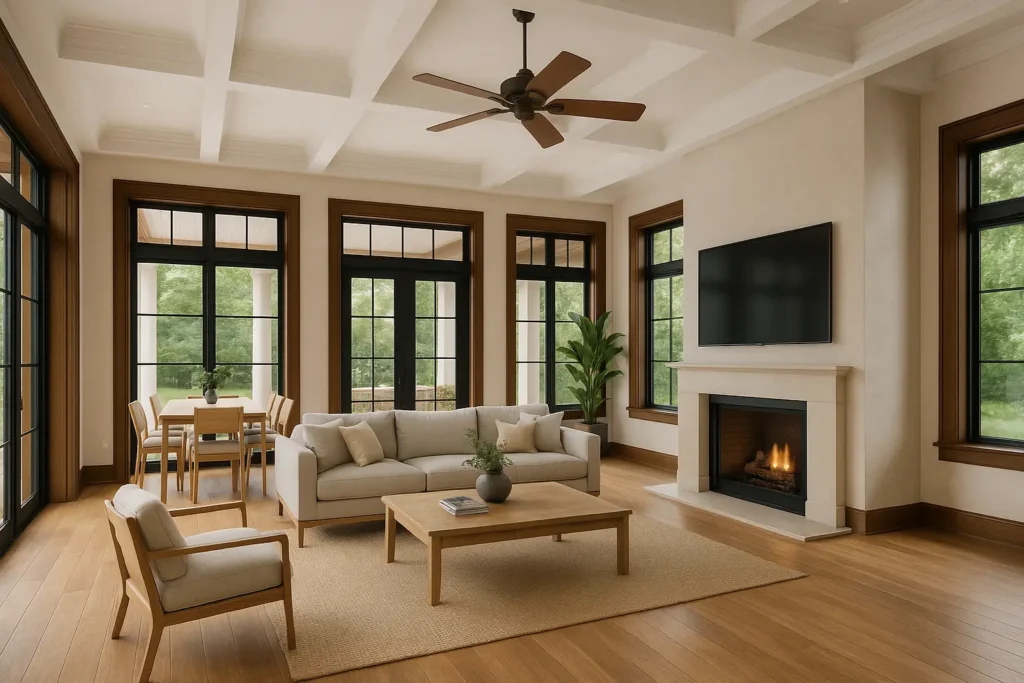
Thermal comfort and climate adaptation
The architecture of a modern colonial style house naturally offers ingenious solutions for thermal comfort that we can adapt to our contemporary needs. The high ceilings promote natural air circulation, creating a chimney effect that cools the interior during hot summer days.
The wide roof overhangs protect the facades from direct sunlight, reducing the need for air conditioning. This pioneering bioclimatic design can be optimized by carefully orienting the house, maximizing solar gain in winter while limiting it in summer.
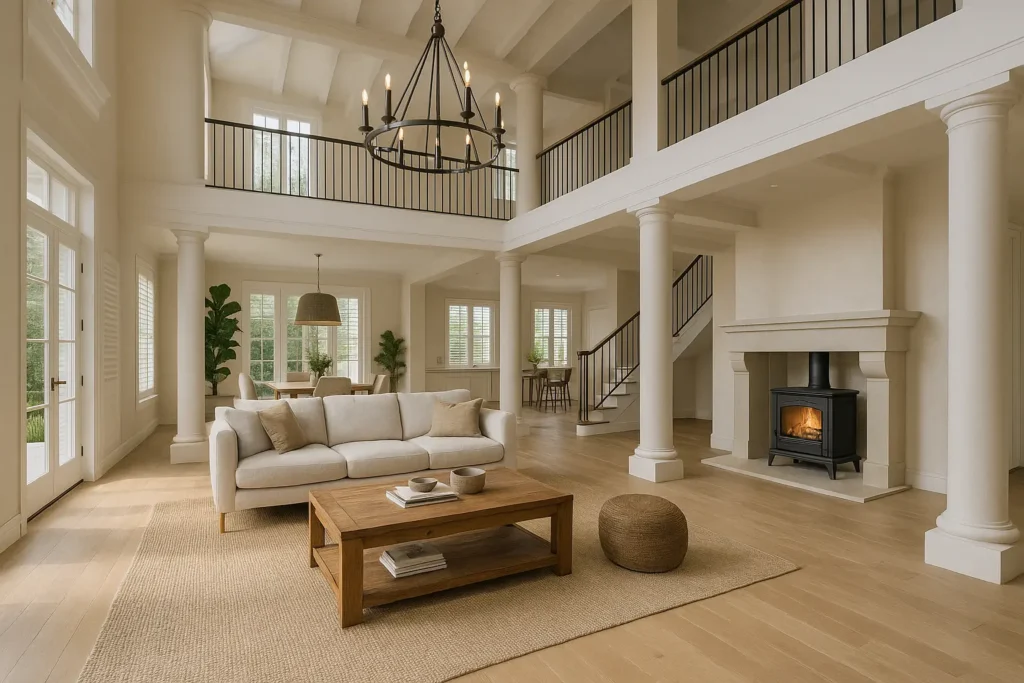
For heating, a wood-burning stove or fireplace fits perfectly into the colonial aesthetic while offering an ecological solution, especially when complemented by a heat recovery and diffusion system in the different rooms.
By combining these traditional elements with modern technologies, we create homes that respect the colonial architectural heritage while addressing today's environmental challenges. A harmonious alliance between past and future, tradition and innovation.
